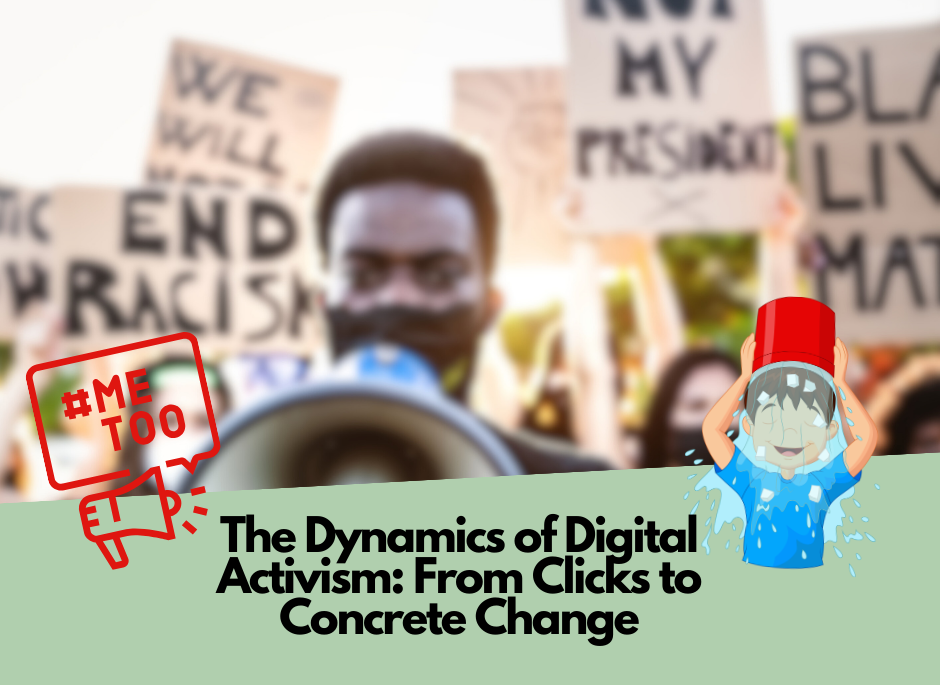Week 6: Activism and Protest
Social media is a powerful tool to pull the publics attention to a particular cause and get a group of individuals focused on an important issue. Anyone can use social media to tell a powerful and captivating story and talk about big issues. (Tufekci, 2017)
Black tiles for Black Lives Matter or the Ice Bucket Challenge for ALS. Movements can be created through social media that allow the public to get involved and actively participate by engaging in the challenge or posting a black tile. They are powerful at garnering the zeightgist and changing the conversations around big issues. (Earl, 2011)
This is subactivism which uses small actions made for ‘political or ethical’ reasons. They are often small ways to engage with causes, like how people changed their profile pictures to say ‘VOTE YES’ in the recent referendum.
However these small acts can be reduced to ‘Clickivism’ which is essentailly easy activism which has no impact on the world and reduces a powerful movement to individuals creating noise that doesn’t spark real change. (Gladwell, 2010) ‘Slackivism’ is the practice of supporting a political or social cause by means such as social media or online petitions, characterised by involving very little effort or commitment which is activism that does not produce any real and lasting change. Does a black tile on a persons private Instagram change the lives of margialised Americans that get discrimated and killed because of the colour of their skin? How does a black instagram title actually see legislative change in America’s parliament? (Jenkins, 2018)
Some would argue that moments like the Ice Bucket challenge, BLM, and #MeToo are cornerstone moments in shaping culture. It seems as if things get to a ‘tipping point’ and then the public responds to issues in a huge way. (Bennett, 2012) These instances are able to unify the broader population in a way which we haven’t seen before in history. It is an example of effective activism, the power of social media and the power of the collective public that drive universal change. (Morozov, 2011)
Over to you, what do you think? Is the Ice Bucket Challenge, people changing their profile pictures in support of an organisation and people posting black tiles activism that garners social and legislative change? Or is it slackivism that just creates noise and does not actually evoke real legislative change?
Refrences:
Bennett, WL 2012, The Personalization of Politics: Political Identity, Social Media, and Changing Patterns of Participation, The ANNALS of the American Academy of Political and Social Science, vol. 644, no. 1, pp. 20-39.
Earl, J & Kimport, K 2011, Digitally Enabled Social Change: Activism in the Internet Age, MIT Press, Cambridge.
Gladwell, M 2010, Small Change: Why the Revolution Will Not Be Tweeted, The New Yorker, vol. 86, no. 39, pp. 42-49.
Jenkins, H 2018, By Any Media Necessary: The New Youth Activism, NYU Press, New York.
Morozov, E 2011, The Net Delusion: The Dark Side of Internet Freedom, Public Affairs, New York.
Tufekci, Z 2017, Twitter and Tear Gas: The Power and Fragility of Networked Protest, Yale University Press, New Haven.
Join the community of over a hundred Lewlyfers! Subscribe free today!





Leave a comment